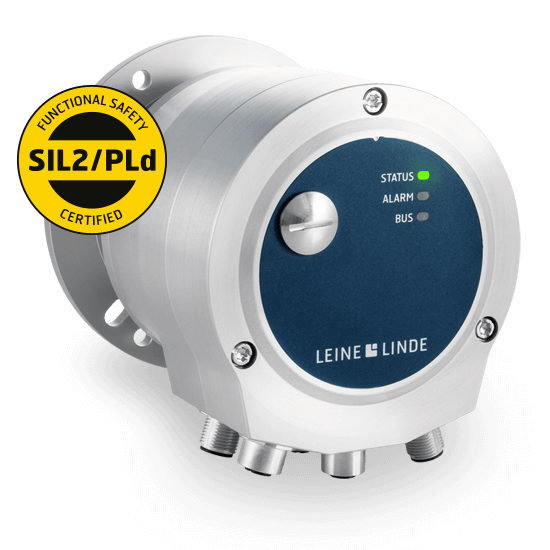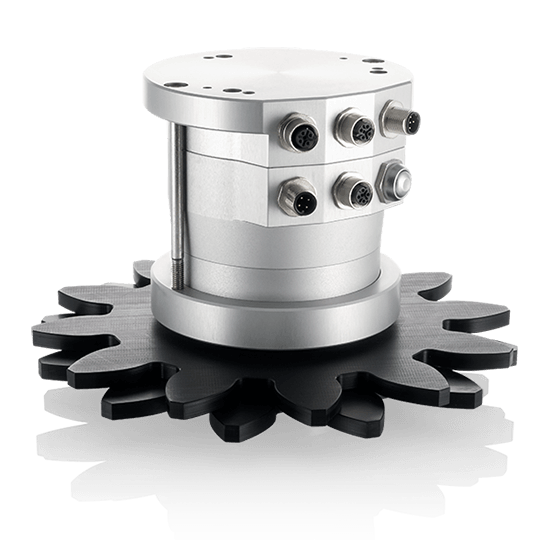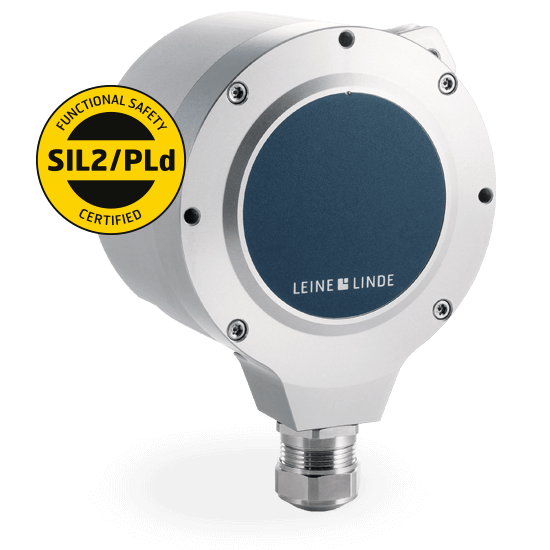Safe motion with FSI 900
Encoder with safety system.
Make sure that speed, acceleration, and end positions keep within safe limits in a functionally safe manner, certified in accordance with SIL2/PLd category 3. The FSI 900 is more than an absolute encoder, proving how Leine Linde´s technical solutions focus on the user conditions and needs.
FSI means Functional Safety Integrated. FSI 900 monitors rotating movement, and acts immediately to make sure none of the user-configured limits will be exceeded. Together with the integrated failsafe relay outputs, the FSI 900 is more than an encoder. It’s a safety system – all in one package.
The FSI 900 is mounted on a motor shaft, winch drum, drill, roll drum, wheel or wind turbine. To achieve the safety functions required in its application, the FSI is based on an absolute encoder. The safe absolute scanning reads out unique values for every position, not even losing its position when the machine is restarted. Movement cannot go unnoticed.
FSI Monitor simplifies installation
The FSI 900 is used for defining and monitoring safe speed, end limits, acceleration, or standstill. Safe limits are configured by a simple and clear process in the software, FSI Monitor. The configuration is made on site by the safety coordinator, so that risk for errors is minimised. The installation is facilitated by the fact that no separate components need manual configuration, thanks to the product’s failsafe relay outputs. The built-in programmability makes the product extremely flexible, as the safe functions can be set up all according to the needs of the user.
Part of the control system – but manages safe functions separately
FSI 900 can be ordered either with incremental outputs or fieldbus communication, for access of the encoder's speed and position data. This makes FSI 900 part of the control system, but the product still takes care of the safe functions separately. The PLC used in the system does not need safety certification. The PLC output is not part of the safety certification, and the communication to the PLC takes part in the normal, standardized way.


